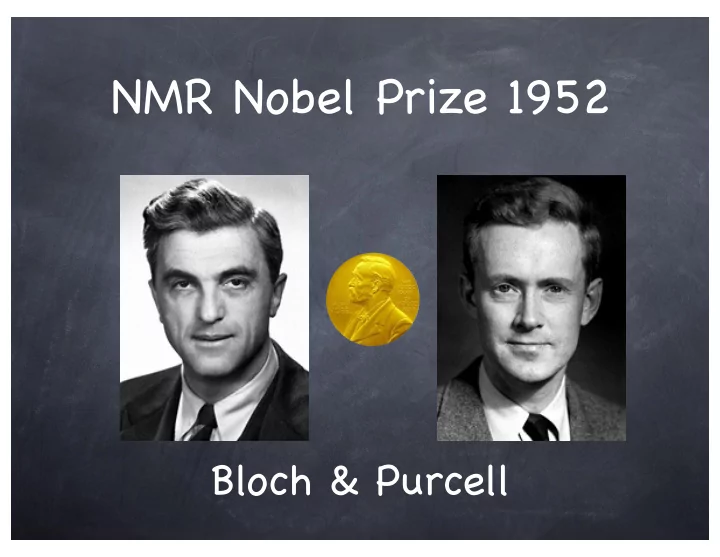

NMR Nobel Prize 1952 Bloch & Purcell
NMR Frequencies
Abundance in Humans
NMR aka MRI
NMR aka MRI
Larmor Precession | ψ � = cos( θ / 2) e i ω t/ 2 | ↑� + sin( θ / 2) e − i ω t/ 2 | ↓� � � ψ | S x | ψ � = 2 sin( θ ) cos( ω t ) � � ψ | S y | ψ � = 2 sin( θ ) sin( ω t ) � � ψ | S z | ψ � = 2 cos( θ )
Precessing Spin | ψ � = cos( θ / 2) e i ω t/ 2 | ↑� + sin( θ / 2) e − i ω t/ 2 | ↓�
Precessing Spin | ψ � = cos( θ / 2) e i ω t/ 2 | ↑� + sin( θ / 2) e − i ω t/ 2 | ↓�
Precessing Spin | ψ � = cos( θ / 2) e i ω t/ 2 | ↑� + sin( θ / 2) e − i ω t/ 2 | ↓� represent any two level system
Dephasing
Dephasing
Dephasing T 2 decoherence time
Population Decay
Population Decay T 1
Quantum Computing | | � | ψ 1 � = c 0 | 0 � + c 1 | 1 � | c 0 | 2 + | c 1 | 2 = 1 | ψ 2 � = c 00 | 00 � + c 01 | 01 � + c 10 | 10 � + c 11 | 11 � | ψ 3 � = c 000 | 000 � + c 001 | 001 � + c 010 | 010 � + c 100 | 100 � + c 011 | 011 � + c 101 | 101 � + c 110 | 110 � + c 111 | 111 � N particles → 2 N states
Quantum Computing examples: NMR - specific nuclei in a molecule each has different resonant frequency Ion traps - hyperfine levels each ion has a different location Superconductor - Cooper pair controlled by voltage across a tunneling junction
Quantum Computing T 2 Number of operations: N = T op T op N particles T 2 10 4 s 10 -3 s NMR 10 7 Ion 10 s 10 -6 s 10 7 Trap Cooper 10 -8 s 10 -10 s 10 2 Pair
Recommend
More recommend